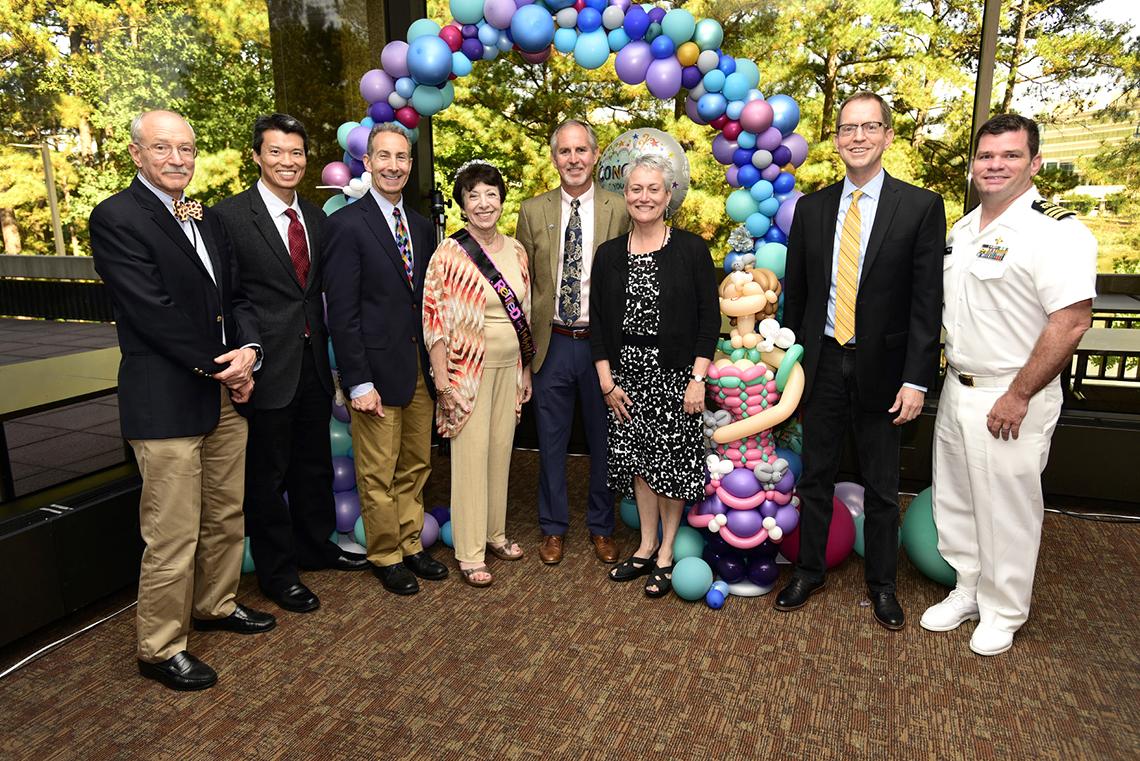Fond Farewells for NIEHS’s Birnbaum

Photo: Steve McCaw
Family, friends and colleagues packed the room Oct. 3 to celebrate the career and leadership of Dr. Linda Birnbaum as she retired after 40 years as a federal scientist, including 10 years as director of NIEHS and the National Toxicology Program (NTP).
The celebration followed one in Bethesda on Sept. 12, hosted by NIH director Dr. Francis Collins. Although he was not able to attend the North Carolina event in person, a group of musicians from the institute performed “Linda B” (to the tune of “Lemon Tree,” made popular by Peter, Paul and Mary, among others) by Collins. NIH principal deputy director Dr. Lawrence Tabak joined the celebration, where he described Birnbaum as prolific, creative, flexible, a good mentor and tenacious.
“She energizes and inspires us to seek that passion that brought us to science to begin with,” he said. Tabak shared figures on publications, citations and other data that illustrated the importance of Birnbaum’s research.
The presence of family members brought her life outside the institute to the forefront. Birnbaum’s sister Sue Silber described the camaraderie and strong connections among members of their extended family. She noted that Birnbaum is mother, grandmother, wife, sister, aunt and great-aunt. “She has quite miraculously balanced these roles with that of institute director,” Silber noted.
Tabak spoke of Birnbaum’s creativity in leading important projects in ways that drew not only from across her institute, but also from across NIH. Such efforts included developing the GuLF Study and the NIH Disaster Research Response program, which grew out of the oil spill experience; responding to West Virginia’s Elk River chemical spill; and opening the NIEHS clinical research unit in North Carolina.
Acting NIEHS director Dr. Rick Woychik highlighted achievements such as diversifying the ranks of tenure-track researchers and keeping the institute at the forefront of emerging contaminant research so that it is a trusted source of information. He also noted Birnbaum’s support for bringing cutting-edge technologies such as cryo-EM and predictive toxicology to the institute.
Veronica Robinson, from NTP and the local chapter of Blacks In Government, spoke of Birnbaum’s impact around the halls of the institute. “I have watched the way you do what you do, and you have been an inspiration,” she said.
In a montage of video clips made by NIEHS staff, the theme of inspiration was repeated, along with seeing Birnbaum as a role model through her leadership, passion for public health and support of clinical research. Speakers voiced many wishes for a great retirement.
“I have gotten so many beautiful emails, cards and notes,” said Birnbaum. “When you’ve had a job that you absolutely love, you really don’t need any thanks.”
Woychik announced that the NIH board of scientific directors voted unanimously to name Birnbaum an NIH scientist emeritus. She will serve as lead researcher of the NTP Laboratory of Toxicokinetics and Toxicology.
